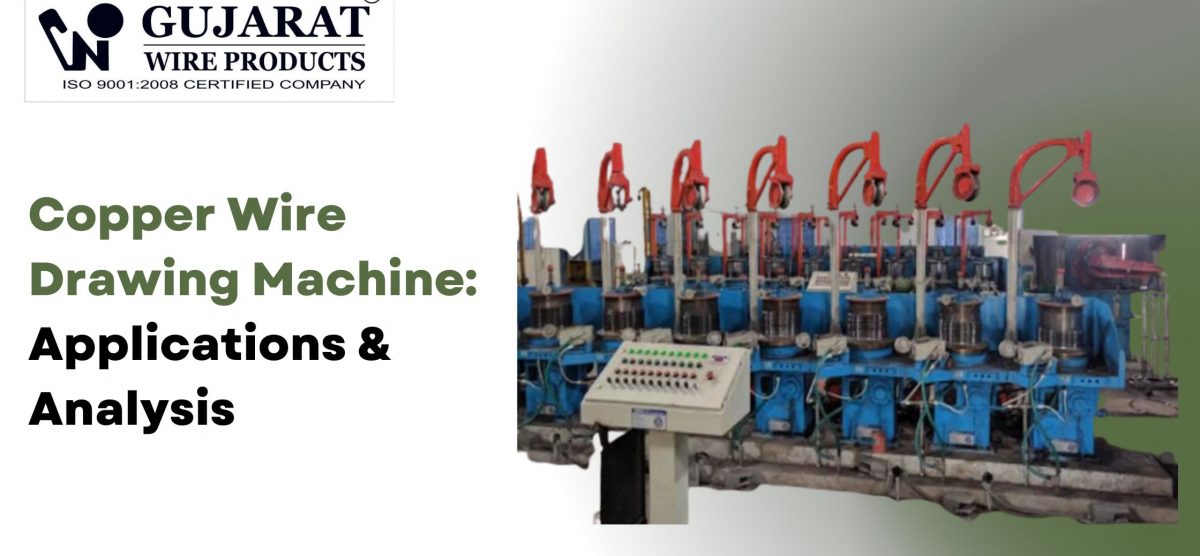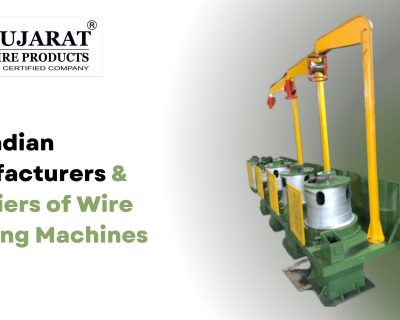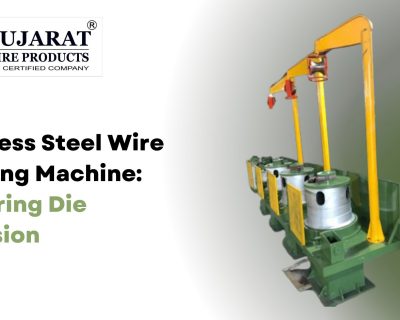Blog

Copper Wire Drawing Machine: Applications & Analysis
Copper wire drawing is a foundational process in today’s industrial and technological landscape. From powering electric vehicles and supporting India’s mega infrastructure projects to enabling breakthroughs in electronics and renewable energy, high-quality copper wire is indispensable. At the center of this transformation are copper wire drawing machines—precision tools that convert thick copper rods into flawless wires, ready for use across sectors.
What Is a Copper Wire Drawing Machine?
A copper wire drawing machine is engineered to pull copper rods (typically 8–10mm in diameter) through a series of dies, gradually reducing their diameter until the desired gauge is achieved, all while increasing elongation and enhancing surface finish. These machines can be configured in single or multi-wire setups, and feature advanced tension control, continuous annealing, and automated spooling for maximum output and consistency.
Structure and Types of Copper Wire Drawing Machines
Single Frequency Conversion Wire Drawing Machines
- Design: Utilizes an in-line tower wheel structure, leveraging a single frequency-controlled motor for synchronized movement.
- Tension Control: Relies on PLC-managed pulse signals to drive slip tension between the main motor and take-up system. This design is well-adapted for general copper wire and die types due to its flexibility and adaptability.
- Maintenance: Although relatively straightforward, maintenance can be higher due to issues like bearing wear and potential oil leaks.
Double Frequency Conversion Wire Drawing Machines
- Design: Employ vertical structures, with independent motors for the main and take-up systems. Gear sealing and mechanical seals greatly reduce wear and leakage risks.
- Advanced Tension Control: Features a sophisticated closed-loop control using PID (proportional-integral-derivative) algorithms and precision potentiometer-driven tension pendulums. This achieves high-precision feedback and superior wire consistency.
- Benefits: Offers improved output speeds, energy efficiency, reduced wire breakage, extended bearing life (5–7 years), and significantly lower maintenance requirements compared to single conversion machines.
Multi-Wire and Specialty Machines
- Multi-wire models draw 8 or more wires simultaneously, supporting large-scale manufacturers in meeting high-volume requirements.
- Wet drawing machines utilize lubrication for finer diameters and superior surface finish, important in electronics and telecom applications.
- Continuous drawing systems automate the entire process for uninterrupted runs and reduced labor interventions.
Key Applications of Copper Wire Drawing Machines
Copper wire drawing machines serve an array of industries, each with specialized demands for wire quality, strength, and finish:
| Industry Sector | Key Applications |
| Electrical & Power | Cables, wiring, connectors, power transmission lines |
| Automotive | Harnesses, electrical systems, EV battery connectors |
| Construction | Building wiring, panel busbars, control systems |
| Electronics | Circuitry, contacts, fine wires in devices |
| Telecommunications | Communication cables, data transmission wires |
| Renewable Energy | Solar panel wiring, wind turbine coils |
| Railways & Transport | Signaling, power supply, traction wiring |
Features and Benefits of Modern Copper Wire Drawing Machines
1. Precision and Quality
- Tolerances: Achievable down to ±0.01mm, essential for high-performance electronics and communication applications.
- Enhanced Mechanical Strength: The drawing process aligns and refines the grain structure, improving tensile strength and resilience.
- Consistent Surface Finish: Lubrication and die design prevent defects, minimize roughness, and ensure a visually and functionally superior product.
2. Automation and Productivity
- Programmable Controls: PLC and HMI technologies regulate speed, tension, and annealing cycles for batch-to-batch repeatability.
- Multi-wire Drawing: Allows simultaneous production of multiple wires, boosting throughput for high-capacity manufacturers.
- Minimal Downtime: Quick die-change systems and automated quality monitoring reduce stoppages and increase operational efficiency.
3. Energy Efficiency & Cost Savings
- Modern motors and inverters: Lower total energy consumption while maintaining production speeds.
- Reduced Material Waste: Precision control minimizes wire breakage and scrap rates.
4. Versatility and Adaptability
- Suitable for a range of copper alloys and wire diameters.
- Customizable lines to support fine (telecom) to heavy-gauge (power and construction) wire requirements.
5. Low Maintenance and Longevity
- Advanced sealing, robust design, and less frequent part wear, especially in double frequency conversion models, ensure years of reliable service.
Market Trends and Industry Outlook in India
The Indian copper wire market reached USD 6.1 billion in 2024 and is forecast to surpass USD 10.8 billion by 2033, at a CAGR of 6.08%. This growth is anchored by:
- Rapid infrastructure development
- Widespread electrification and renewable energy projects
- Surging automotive and electronics manufacturing
- Investments in domestic copper wire plants, reducing import dependence and ensuring steady supply
Wire drawing machine investments are rising in parallel, driven by the need for precision, efficiency, and cost-effectiveness in wire production. Leading domestic manufacturers and exporters rely on advanced copper wire drawing equipment to maintain competitive advantage and meet both domestic and international standards.
Maintenance Tips for Long-Term Performance
- Routine Inspection: Check bearings, dies, and lubrication systems regularly.
- Tension and Speed Calibration: Fine-tune machine settings for each batch to prevent wire breakage and surface defects.
- Die Maintenance: Replace drawing dies at prescribed intervals to avoid diameter drift and maintain high-quality output.
- System Cleaning: Prevent debris buildup, which can cause wire scoring or equipment wear.
- Operator Training: Invest in operator skill development to maximize equipment performance and avoid common operational errors.
Why Choose Gujarat Wire Products for Copper Wire Drawing Solutions?
- Comprehensive Portfolio: From single to multi-wire drawing lines, tailored to various copper grades and diameter needs.
- Customization: Solutions engineered for unique industry requirements—whether for ultra-fine electronics wire or robust construction cables.
- Advanced Automation: Integration of PLC/HMI controls, quality monitoring, and smart tension management for next-gen manufacturing.
- Expert After-Sales Service: Installation, training, fast spares supply, and ongoing technical support ensure maximum uptime and peace of mind.
Frequently Asked Questions
Q:What wire diameters can be produced?
A: From as large as 8–10mm rods down to fine diameters as small as 0.15mm, depending on the model and number of drawing stages.
Q:Are Gujarat Wire Products machines suitable for export-grade requirements?
A: Yes, with high-tolerance output, surface quality control, and scalable production, our machines are trusted by Indian and global wire producers.
Q:How does double frequency conversion improve performance?
A: It delivers more consistent tension, faster speeds, less breakage, longer bearing/part life, and lower overall maintenance versus traditional single-conversion machines.
Conclusion: Ready for the Future of Copper Wire Production
As India’s wire and cable sector prepares for unprecedented growth, the demand for robust, precise, and efficient copper wire drawing machines is set to climb. Gujarat Wire Products stands poised to meet these needs—with cutting-edge solutions that power the nation’s most vital industries.
Supercharge your wire production. Choose Gujarat Wire Products—India’s leading name in copper wire drawing machine excellence.




